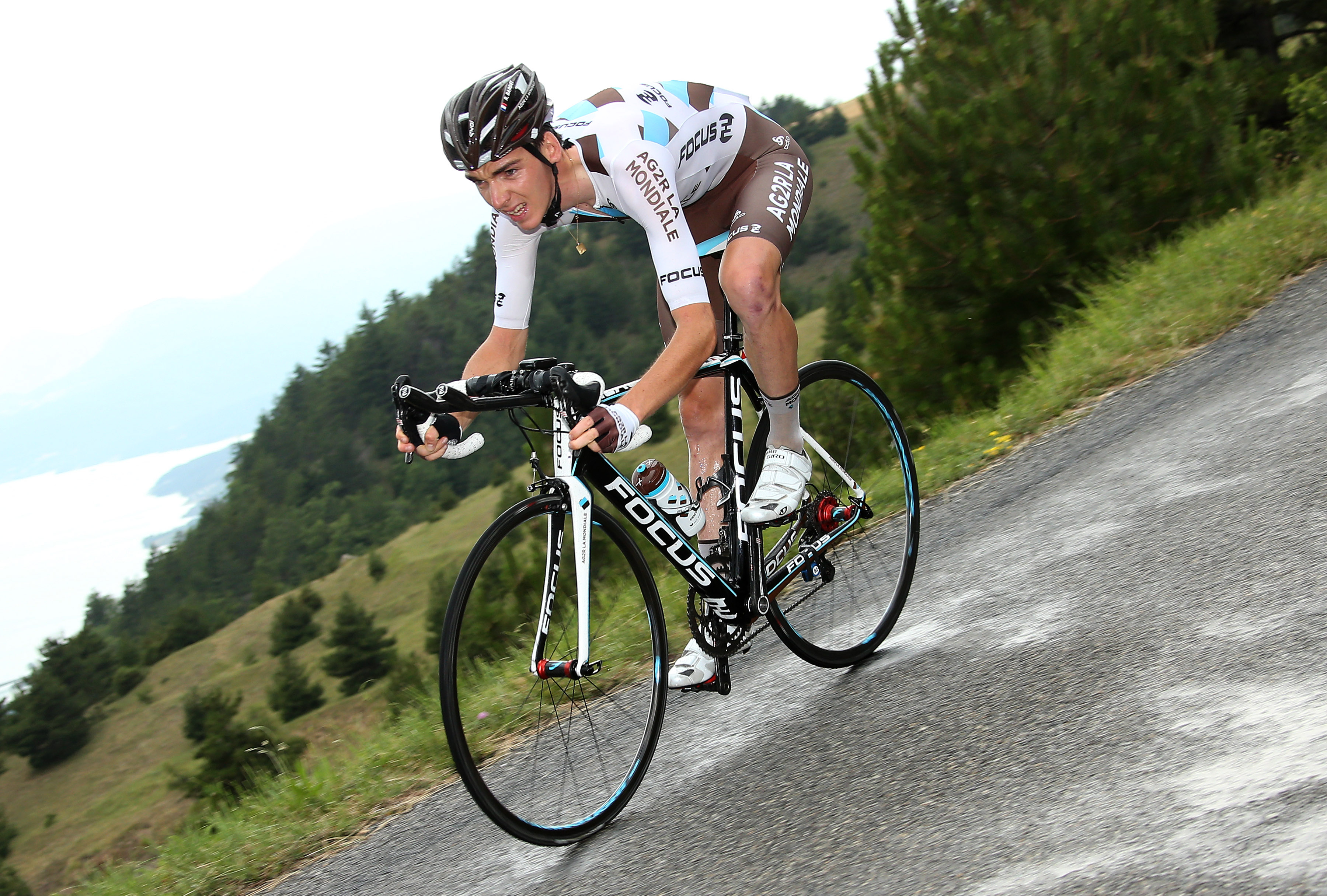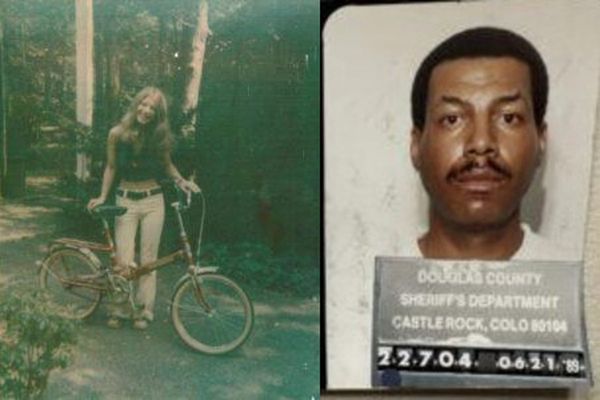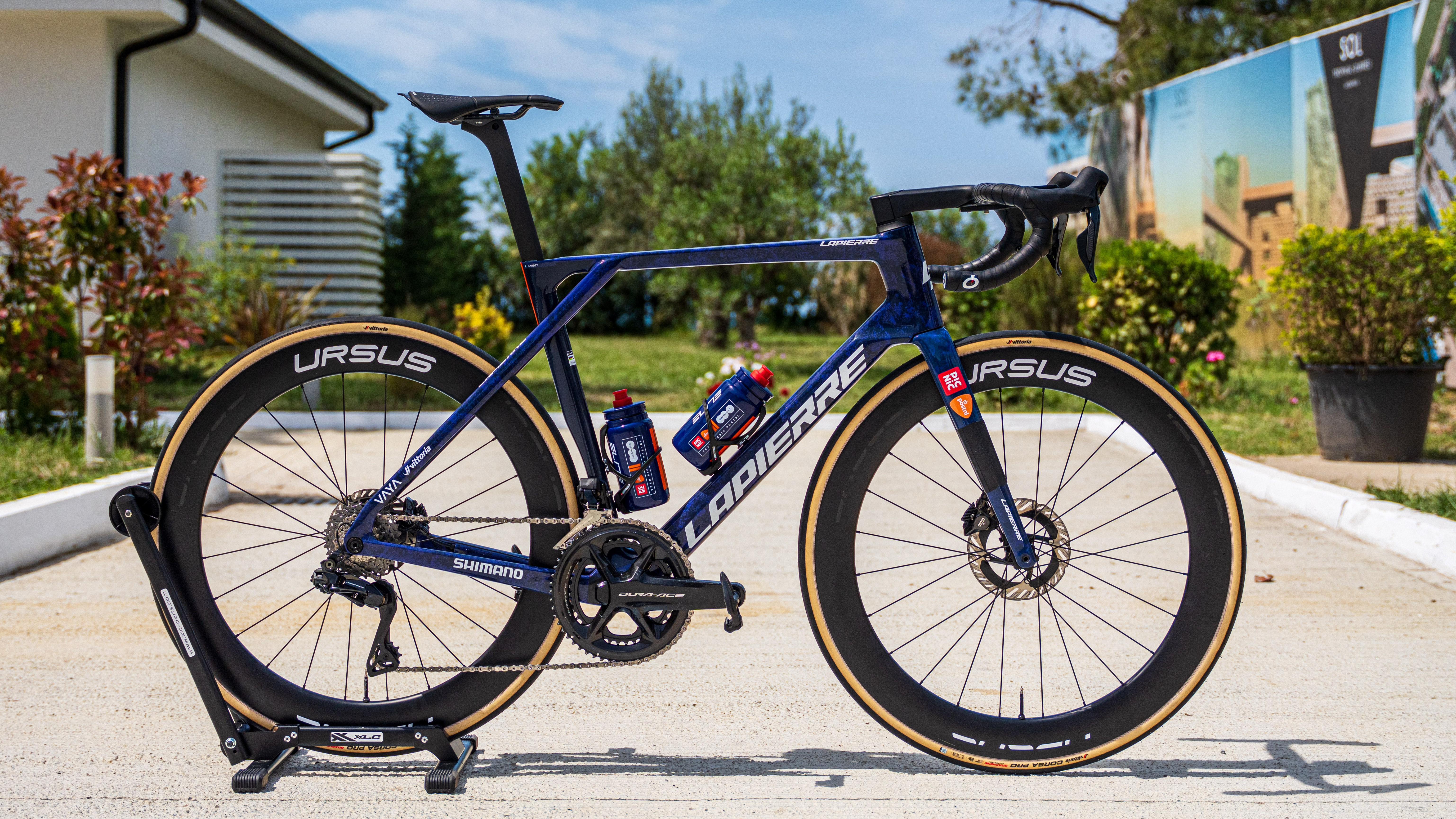
This summer, Romain Bardet will retire and hang up his wheels at the Critérium du Dauphiné. Bringing the curtain down on a storied career which spans 14 seasons. One that has seen the classy French rider enjoy his greatest success at the Tour de France.
Bardet has won four stages of his home Grand Tour, the polka dot king of the mountains jersey, as well as wearing the yellow jersey last year after he and teammate Frank van den Broek kept the charging peloton at bay on Stage 1 after a thrilling breakaway effort.
Bardet turned pro in 2012 and, aside from his neo-pro season, has ridden a Grand Tour every year since then. He’s ridden 11 Tours, three editions of La Vuelta a España, and three editions of the Giro d’Italia.
This year's Giro d’Italia, which kicked off in Albania, will be Bardet’s final Grand Tour. He's fought for stage wins and the general classification in previous Grand Tours but admits the modern-day peloton's racing style perhaps lacks the romance of decades gone by. The Frenchman explained in a recent interview with Cyclingnews what makes the sport beautiful for him
"My biggest achievements came when we improvised during racing. We carefully planned and executed my stage victory at last year's Tour, but it was "pure cycling" as I said at the time. That way it's more satisfying. It's what makes our sport so beautiful, no?"

Here, we will take a look back at Bardet’s grand tour race bikes from various points in his career.
Bardet began racing in 2013, which means he has ridden through some sizeable changes in race bike tech. The Frenchman began on rim brakes, mechanical groupsets, and tubular tyres and finishes with aero optimised frames, tubeless wheels and the latest semi wireless Shimano Dura-Ace equipment. That's to say nothing of the changes in race kit and aero equipment that dominate the sport now.
The Frenchman started the race aboard his Team Picnic Post NL Lapierre Xelius DRS road bike. After the freshly rebranded team switched from Scott bikes at the start of this year, and announced a four-year deal with the brand.
During his professional career, Bardet has raced on Lapierre, Scott, Eddy Merckx, Factor, Focus and Kuota bikes. He raced his first Tour on a Focus Izalco MAX back in 2013, and will retire in 2025 on a Lapierre. We will start with his current 2025 race bike and move back through the years, arriving at his first-ever Tour de France in 2013.
2025
Bardet's race bike this year will be the Lapierre Xelius DRS model. A fairly standard-looking design as modern road bikes go, until you arrive at the dramatic chainstay design. This model received an update for 2025 and has clearance for up to 32mm tyres.
Build-wise, the bike is fitted with a Shimano Dura-Ace Di2 electronic groupset, Lapierre proprietary seatpost and stem/handlebar, Prologo saddle and handlebar tape, Ursus wheels and Vittoria Corsa Pro tyres.
Some pro riders seem to have a deep connection with their machines, while others just see them as tools. We don't know Bardet's view, but hopefully, man and machine can come together on the road to Rome to produce some final Grand Tour magic.
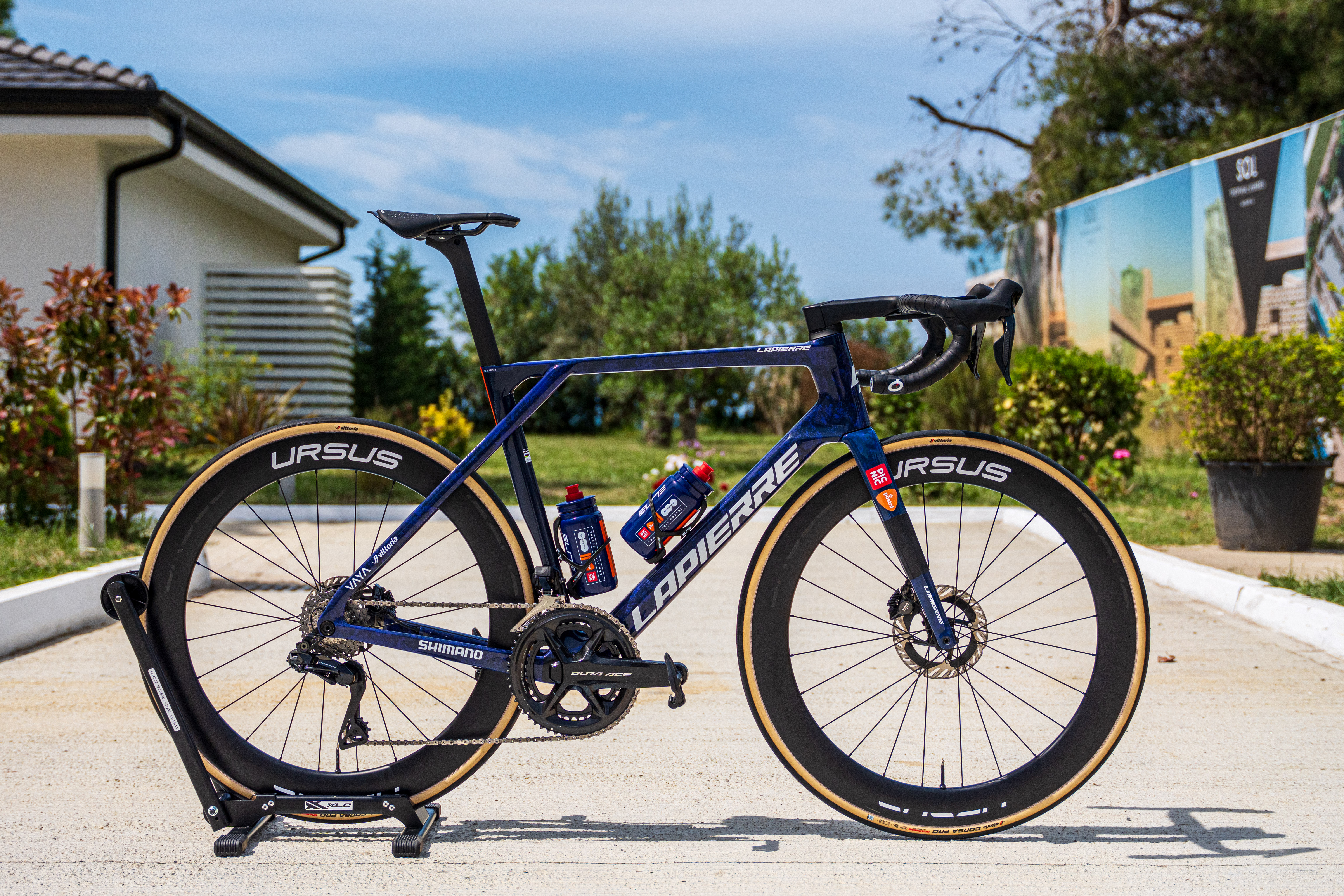
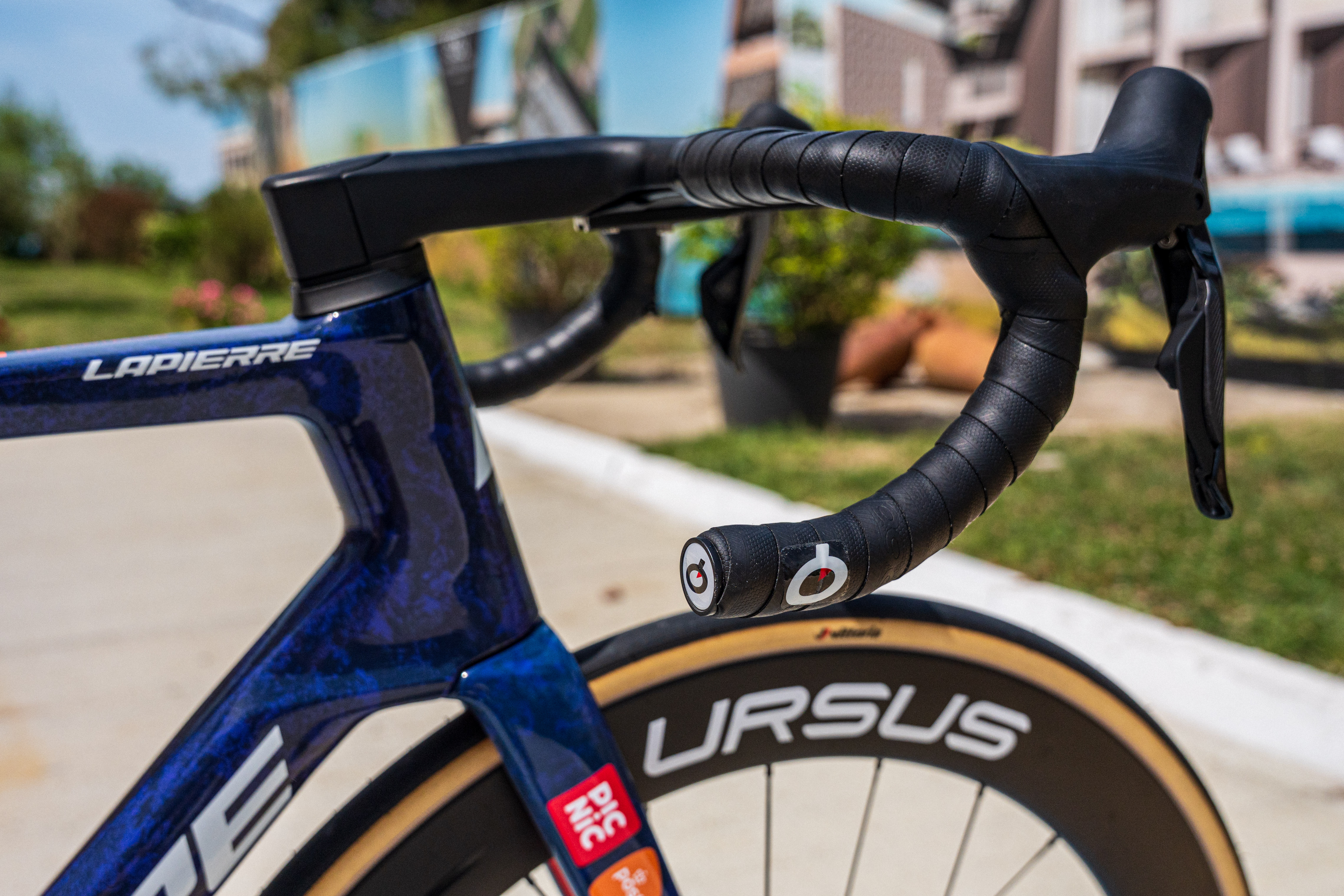
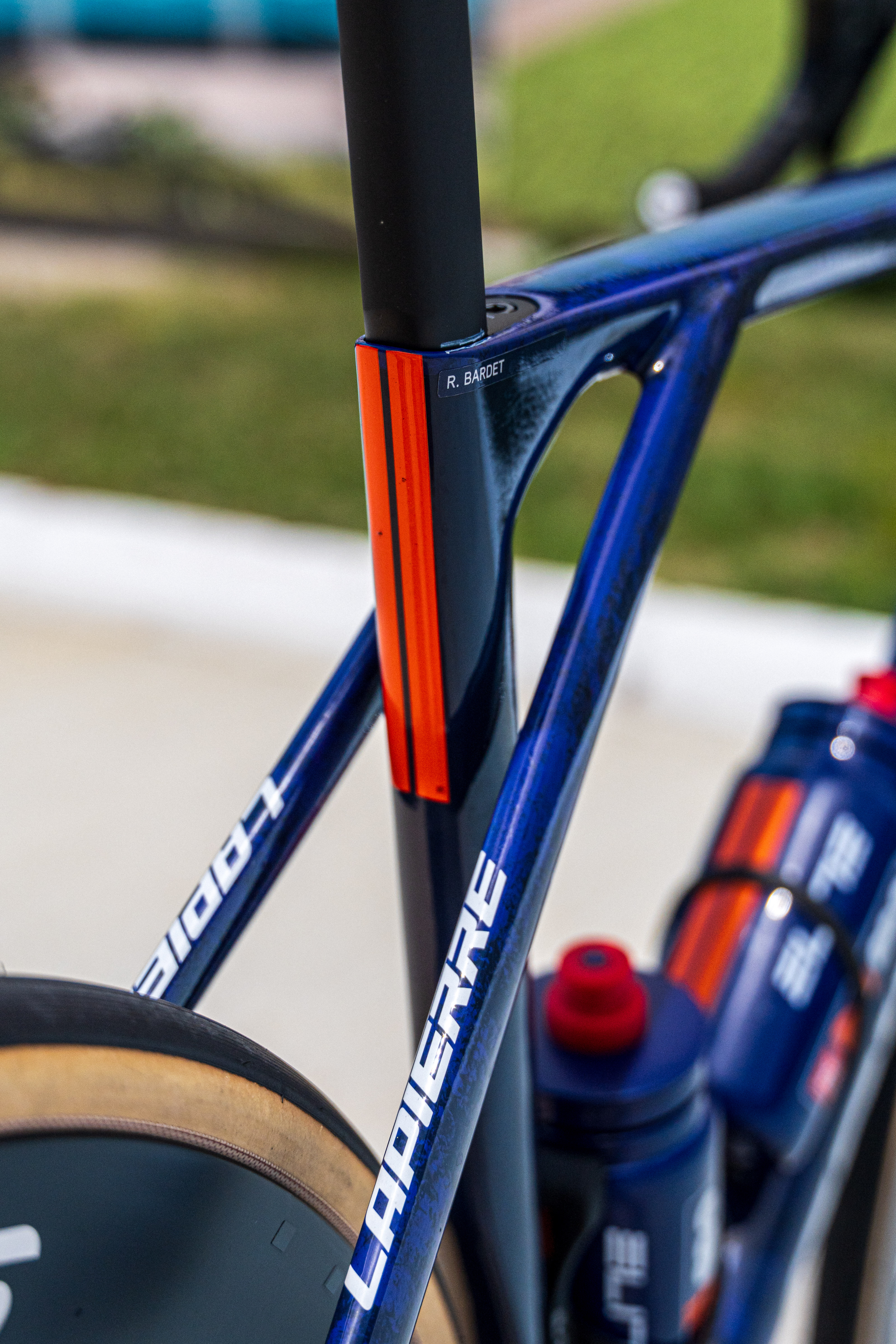
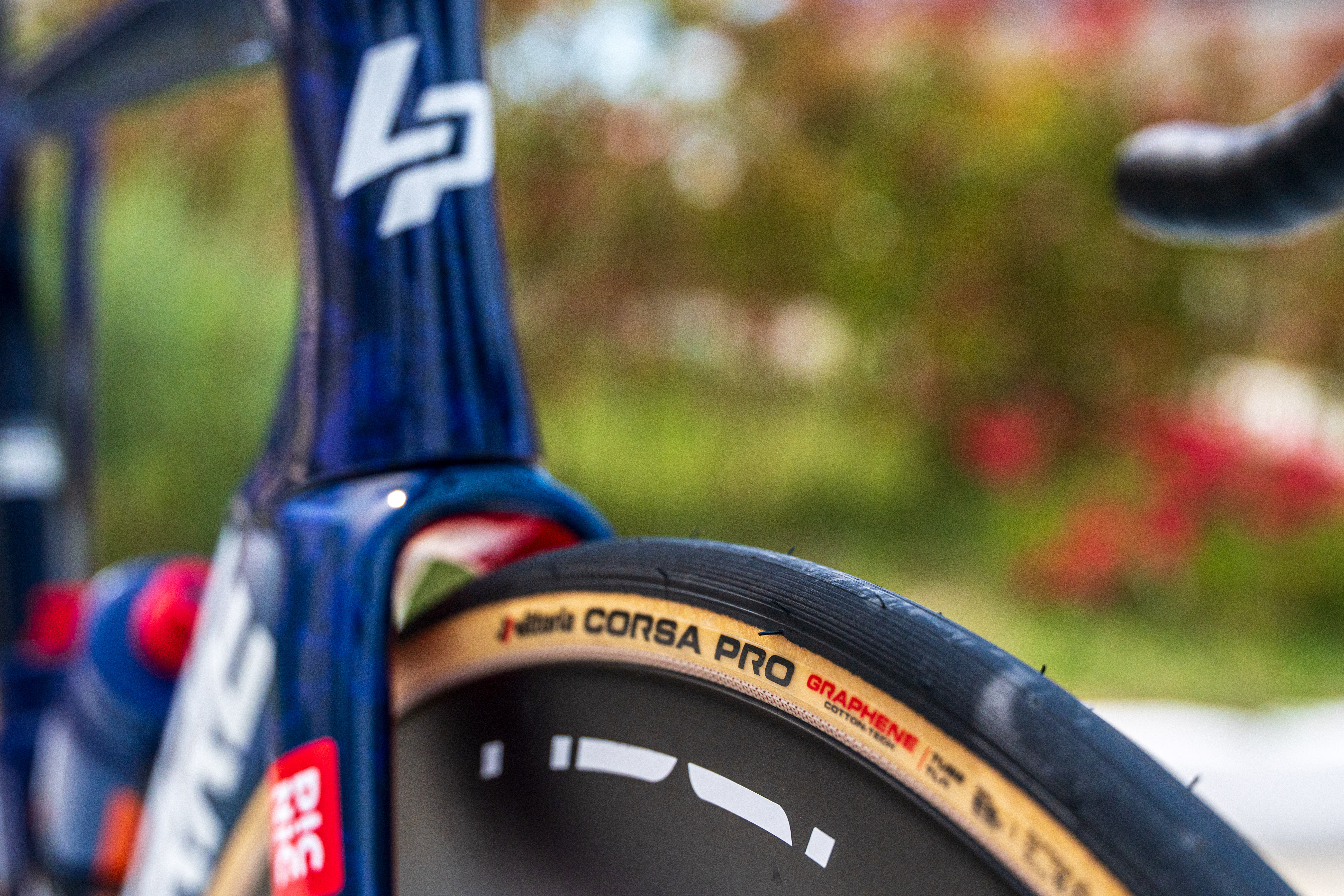
2020
Next, we jump back half a decade to 2020, Bardet was in his final year racing for
AG2R La Mondiale. He spent nine years on the team in total, and it's fair to say the bulk of his career.
Bardet used an Eddy Merckx Stockeu69 model in 2020, not the greatest model name, but it's a good-looking bike nonetheless and marks the end of the rim brake era in the pro peloton.
Bardet was still on electronic Dura-Ace, but a rim brake version, plus a Rotor chainset and gold KMC chain for a bit of a component mix. Mavic Cosmic carbon tubular wheels complete the build. Interesting to see now is the integrated carbon handlebar and stem, but with some cabling still visible, marking the transition to fully internal front ends, which have been made possible by disc brakes.

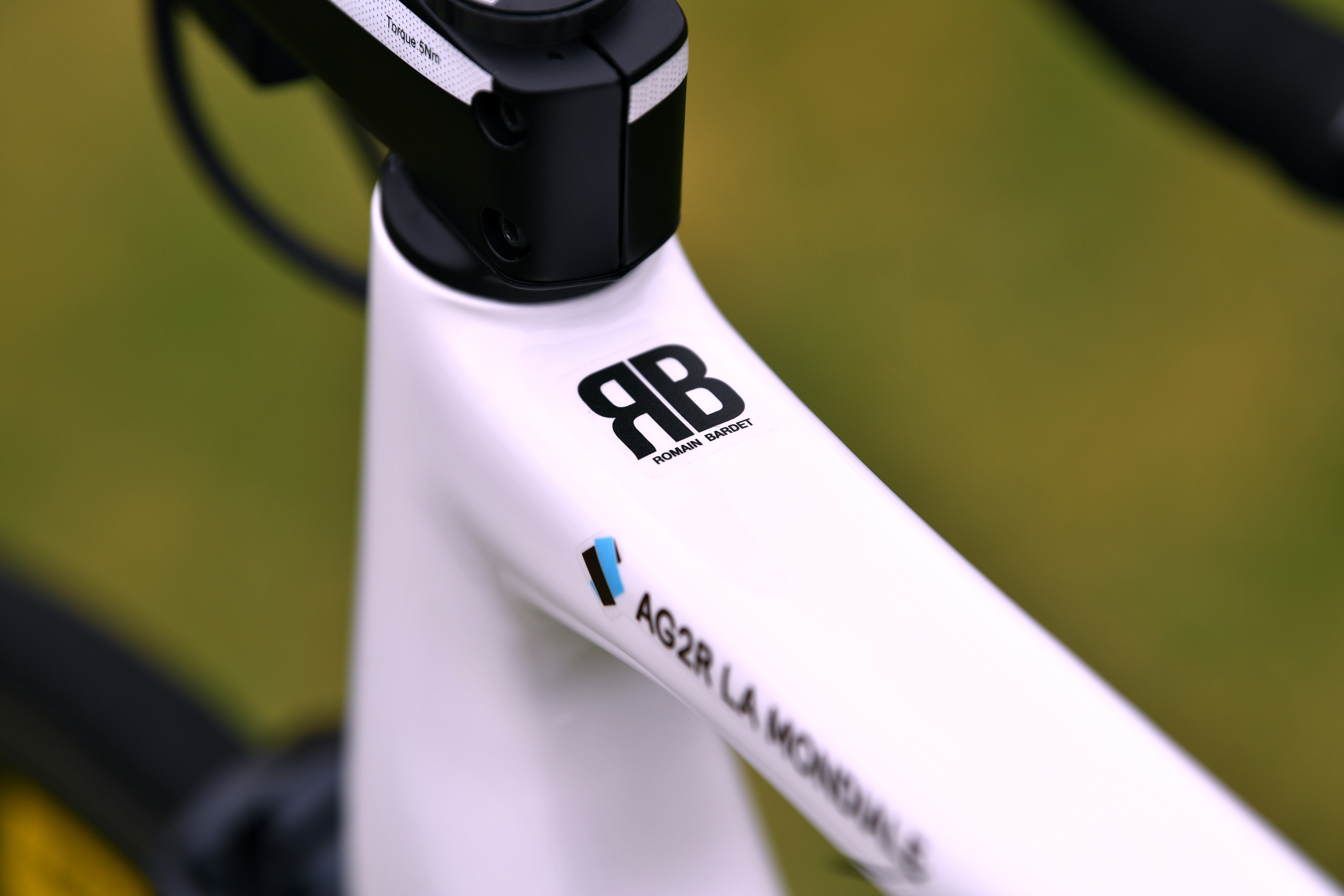


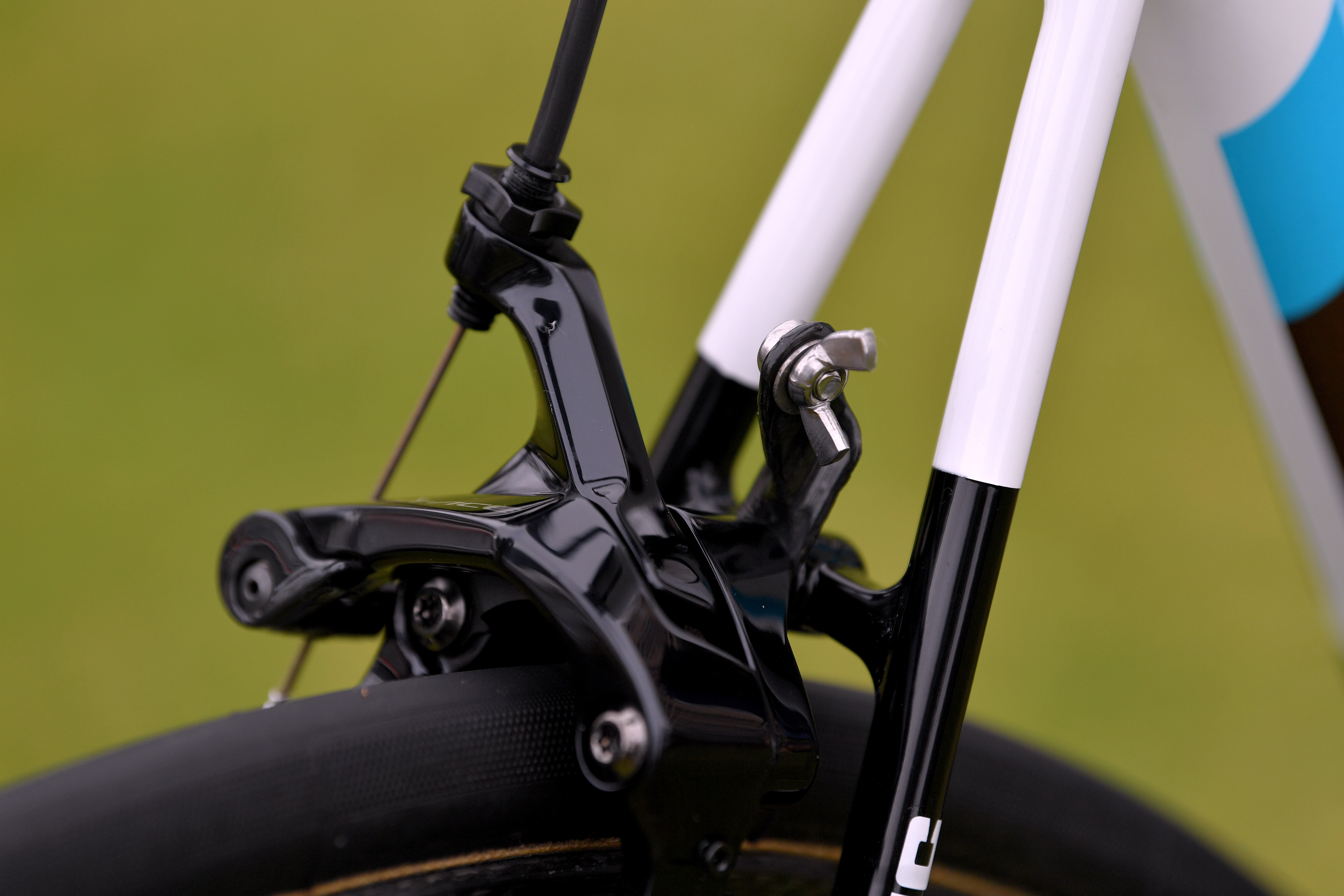
2018
Bardet was racing at AG2R La Mondiale in 2018, but the team was riding on Factor bikes during this period. Here we have Bardet's 2018 Factor One Tour de France bike. A model that looks more aero-influenced than the 2020 Merckx he used.
The Factor One caught the eye at the time for its distinctive external steerer tube design, which can be seen in the photo below. Factor at the time claimed it was the world's most aerodynamic bike, it was actually available as a disc brake bike, but the pro peloton hadn't quite made the jump to discs at this point.
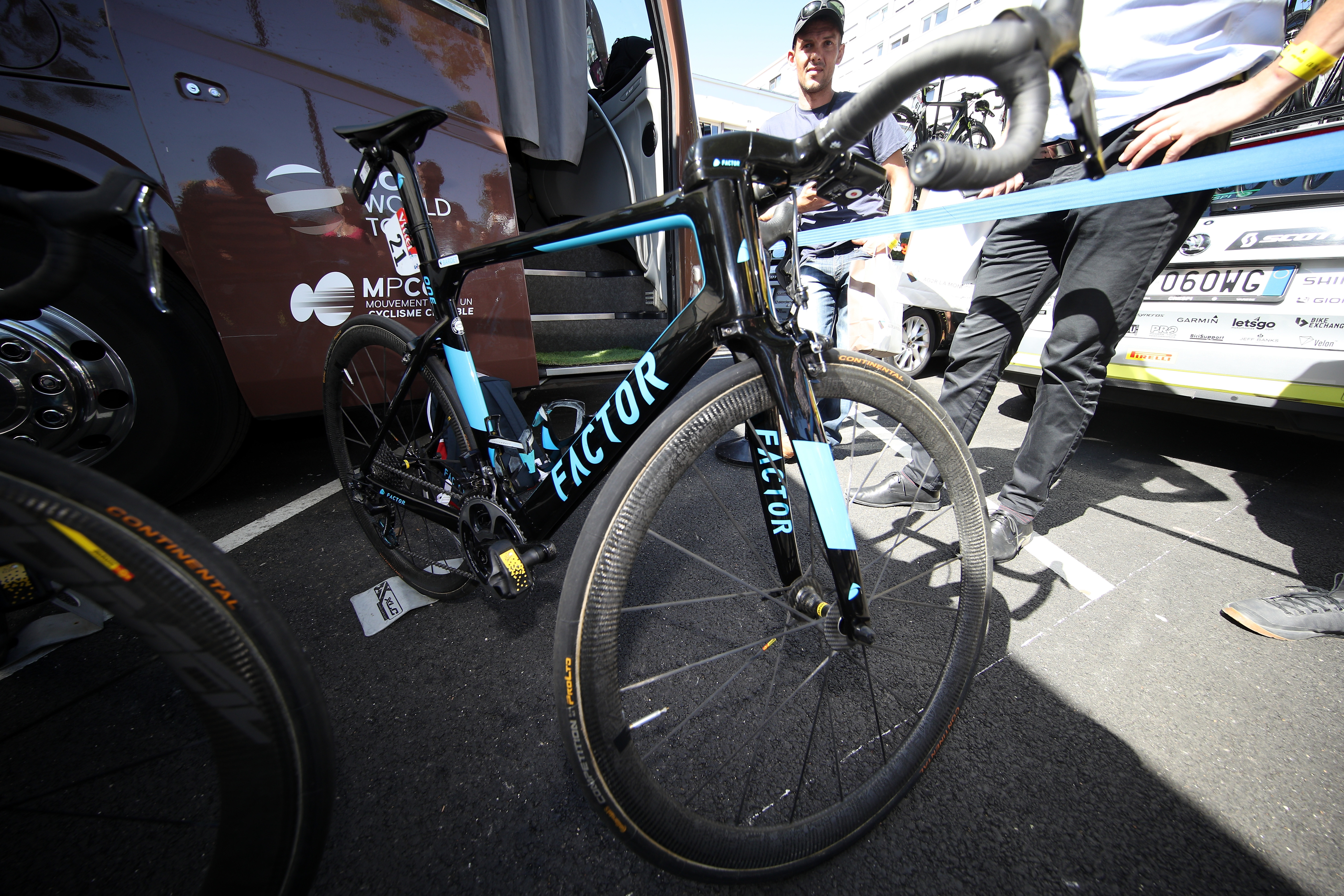

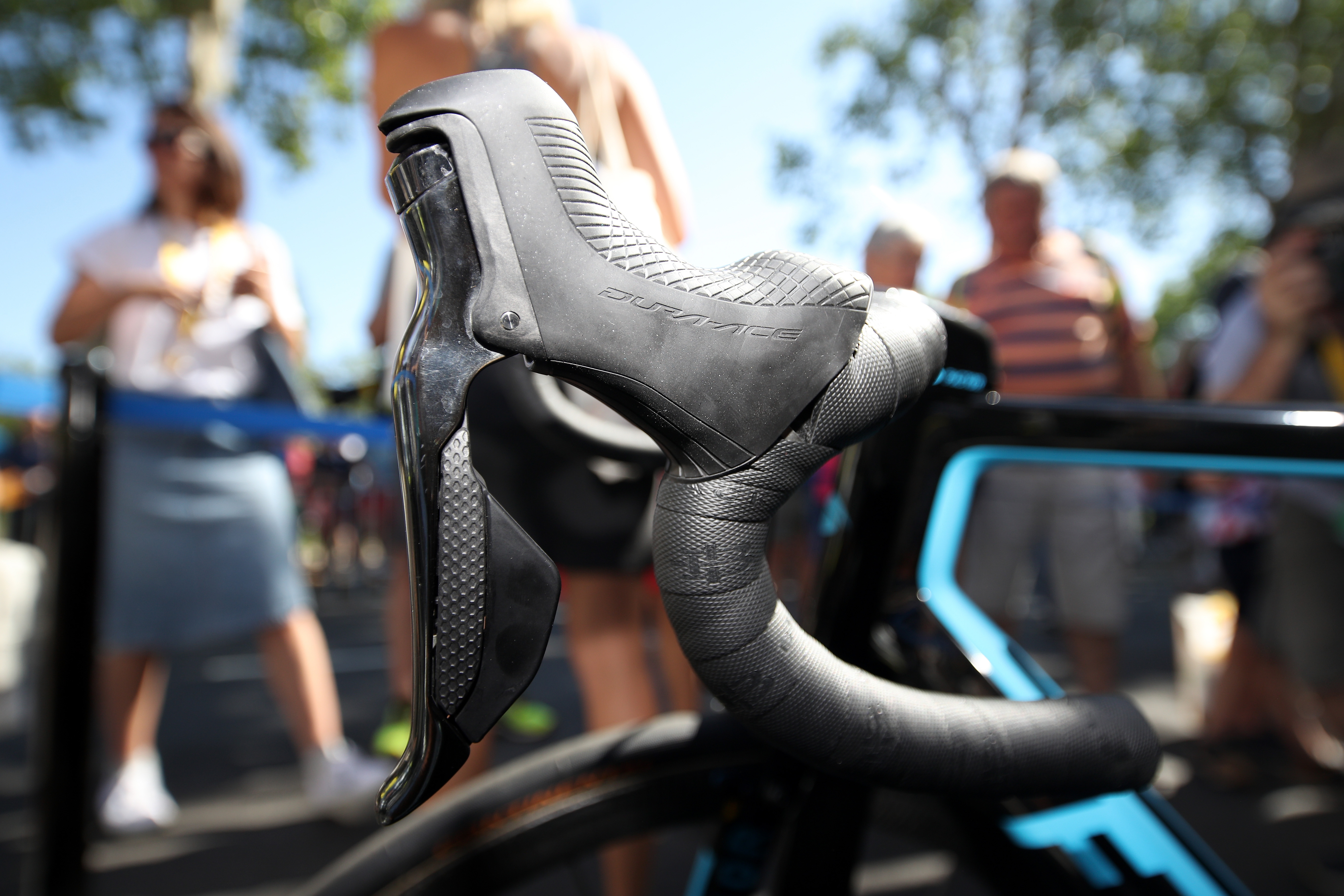
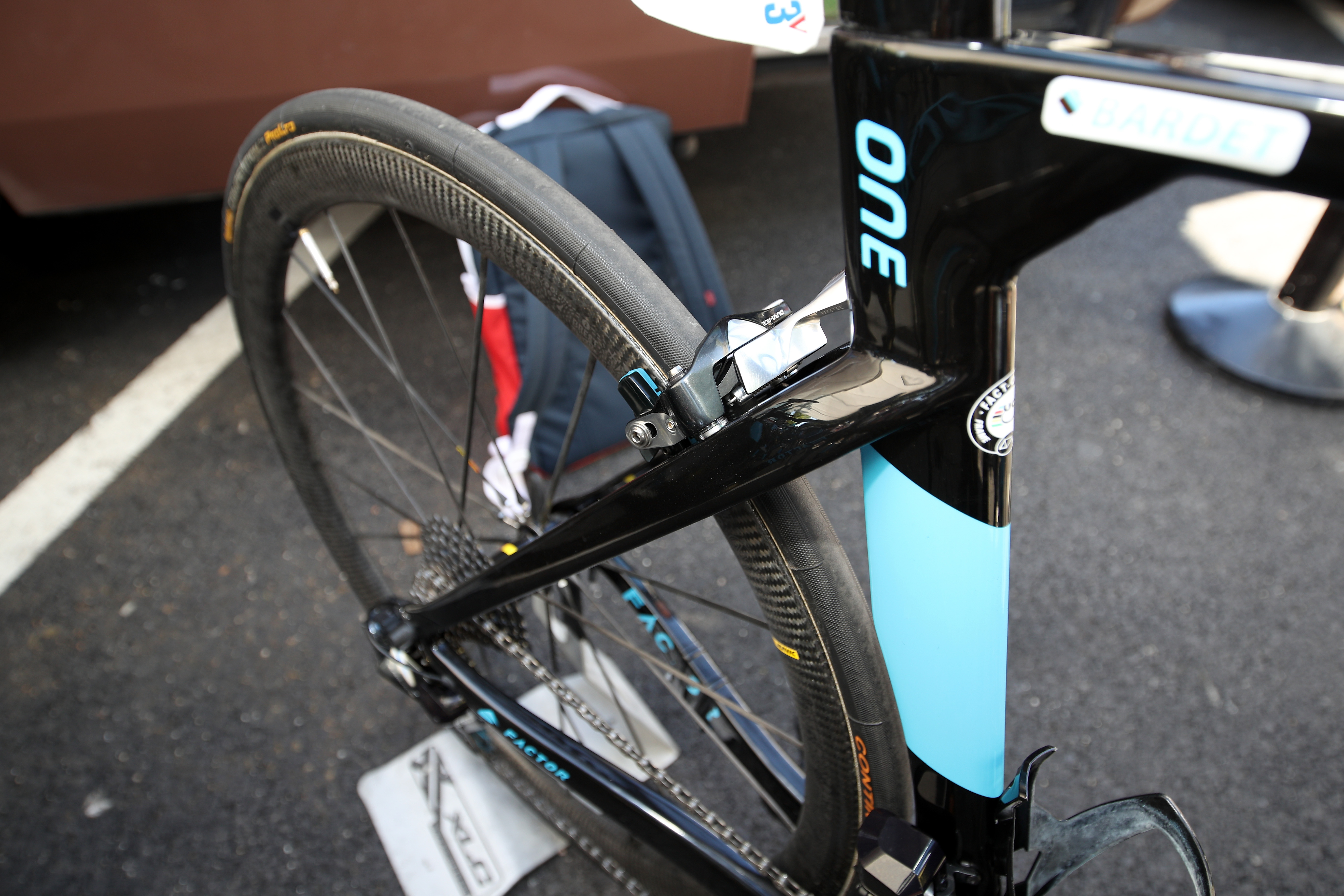

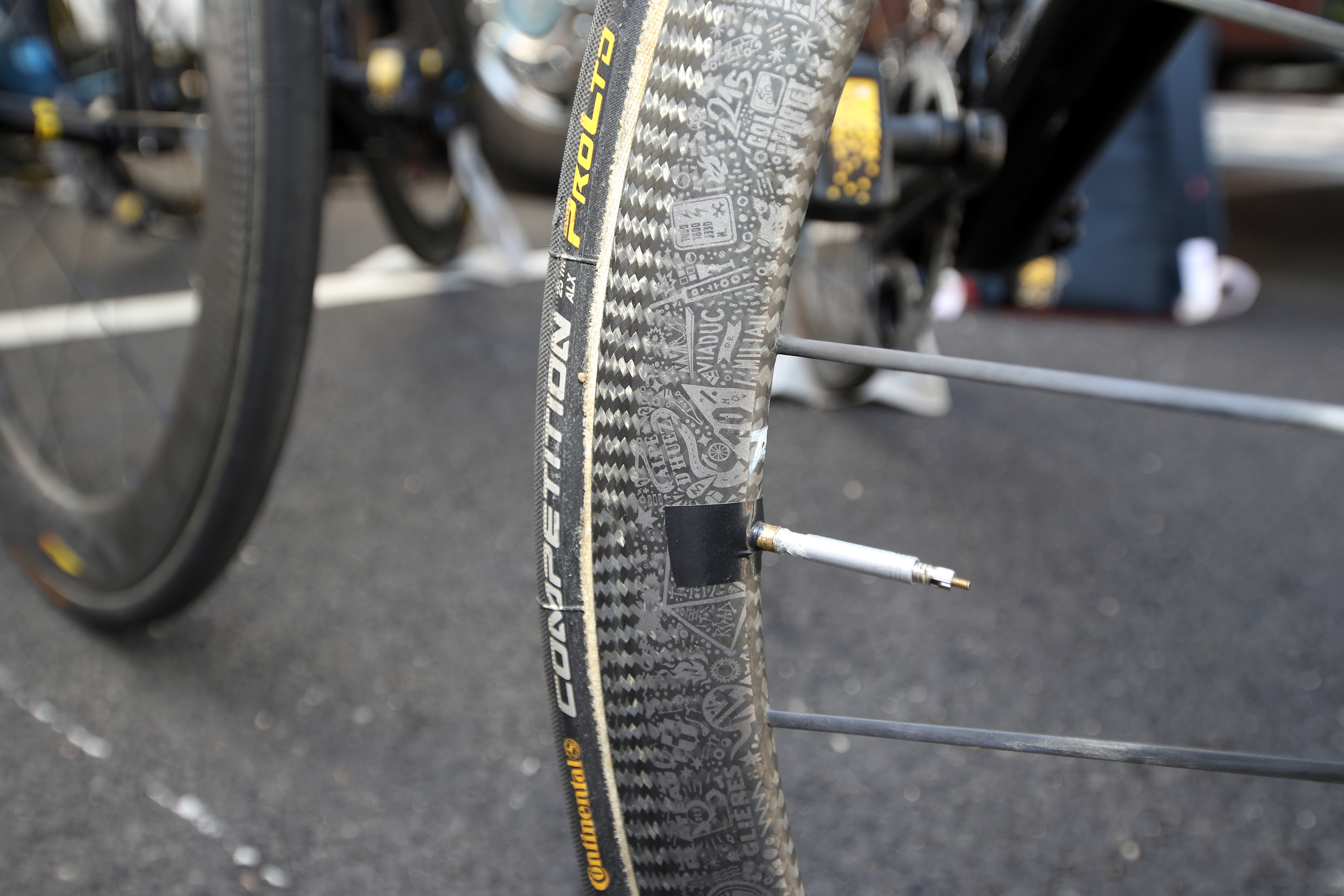
2016
2016 was Bardet's fifth year with AG2R, and we turn our attention to the Focus Izalco Max, a bike that the Frenchman would surely have become very familiar with during his five years or so riding one.
The Izalco Max, in its lightest form, was one of the world's lightest production frames. Frames like the Izalco Max and Cannondale Supersix Evo Hi Mod could result in very lightweight overall builds during this period, with their rim brakes and slender tubes.
2016 was an interesting year for tech because Bardet was riding with SRAM Red 22 mechanical and eTap electronic wireless groupsets. Representing a transitional year.
From these pictures, it seems Bardet was experimenting with two different bike builds to try out the systems. Builds were finished with Zipp tubular wheels, Continental tyres (who else loved the old Zipp logos?) Zipp stems, handlebars and seatposts and Look pedals.
Bardet finished second in the Tour de France this year and won stage 19.
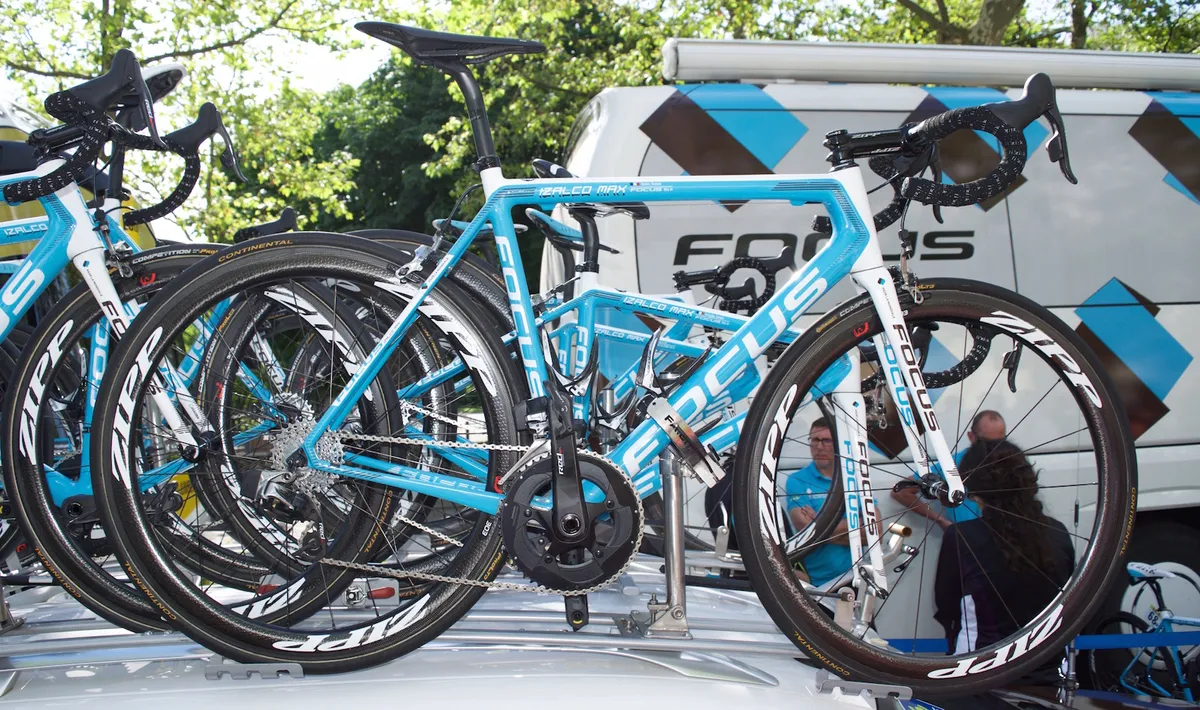

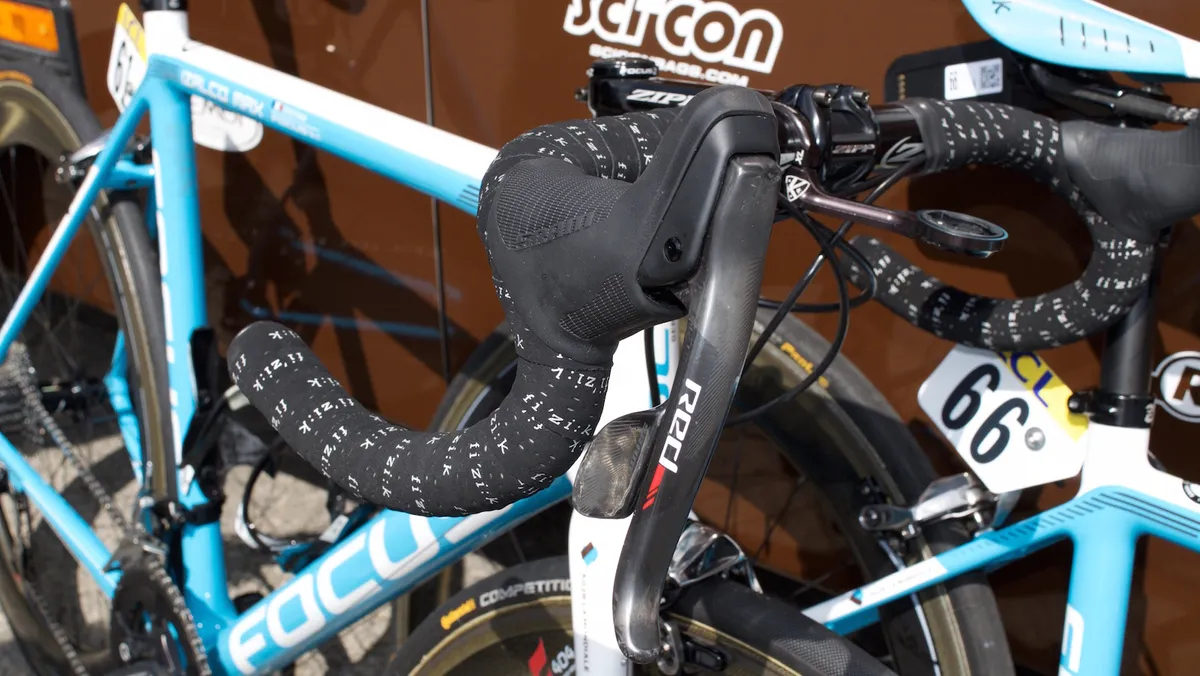
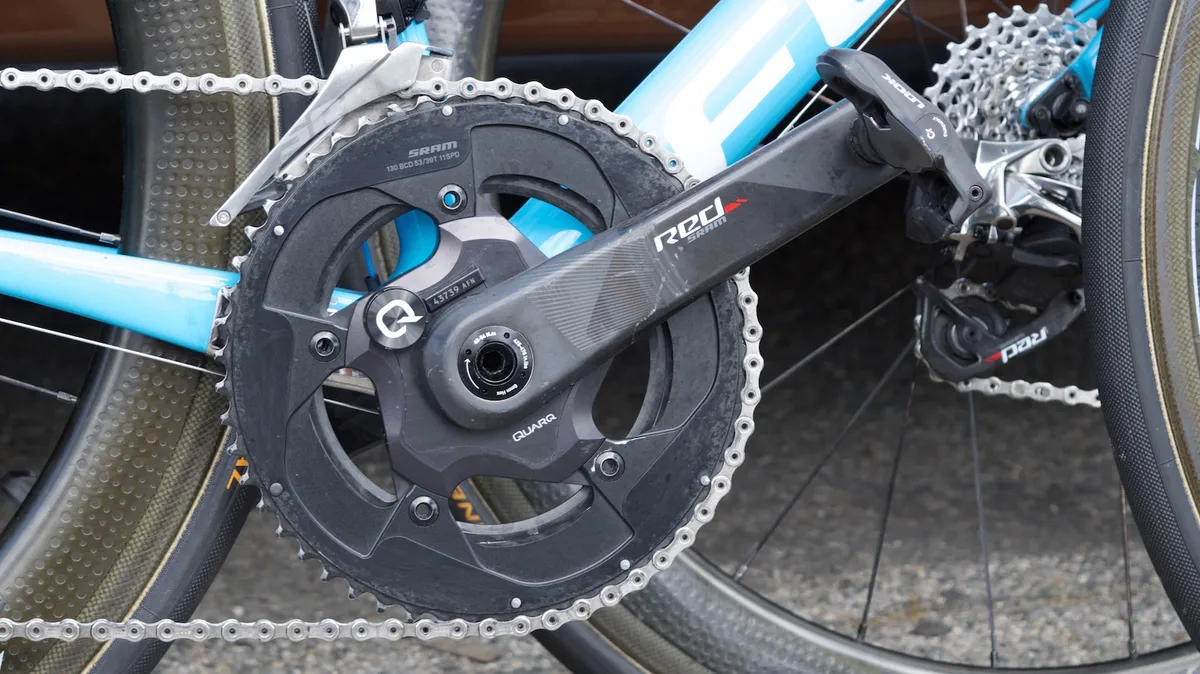
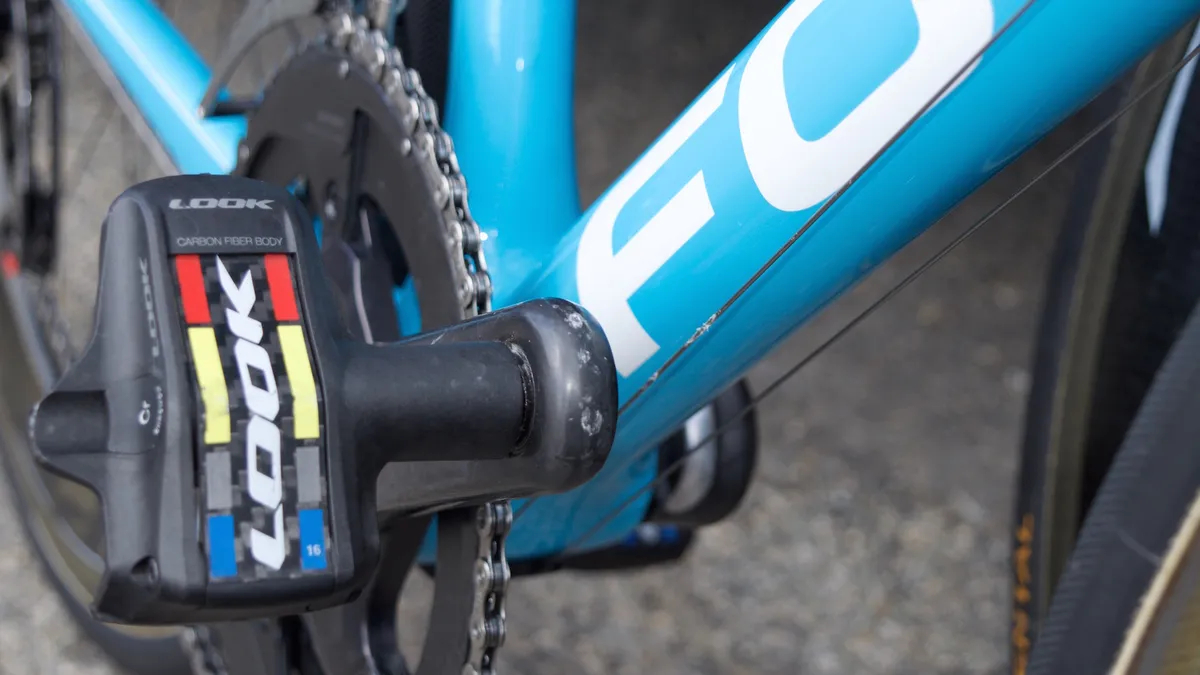

2015
Bardet's bike didn't change too much between 2015 and 16, the standout difference was the introduction of Red eTap in 2016.
In 2015, Bardet ran SRAM Red 22 mechanical groupset, Fizik seatpost, stem and handlebar and the bike here is pictured with Zipp 202 wheels, the lightest wheelset the American brand produced at the time.
Bardet often appeared to have a healthy amount of forward handlebar roll with a fairly high shifter position – the first shot below is a good example of this.
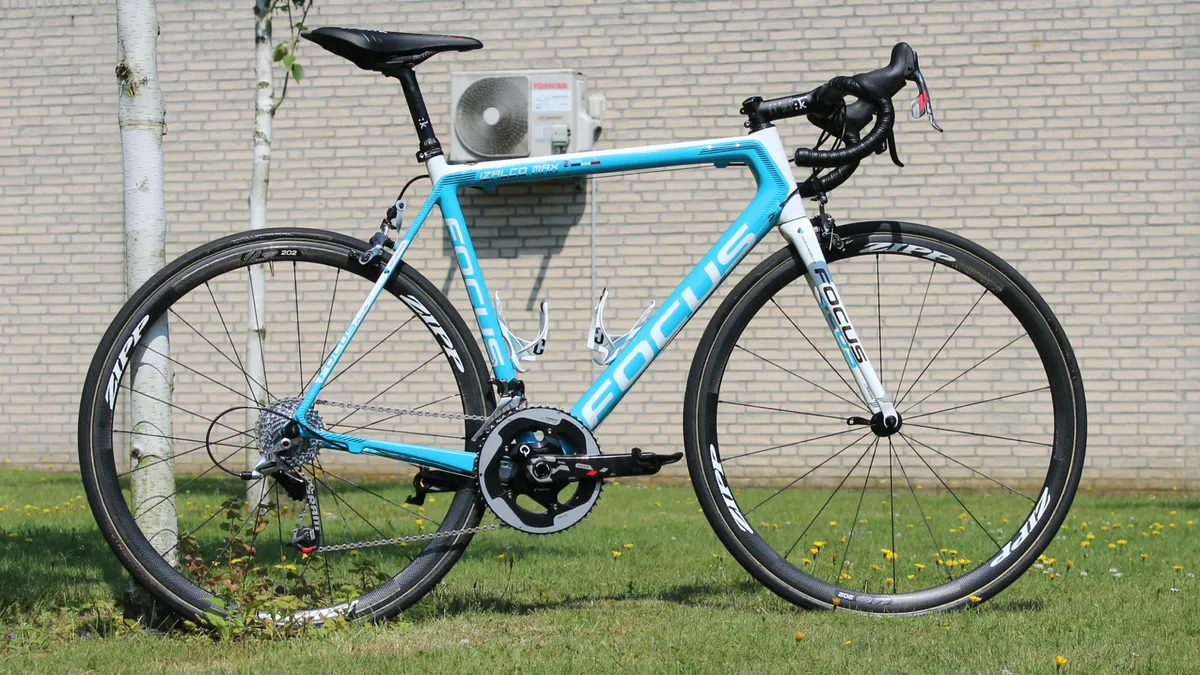
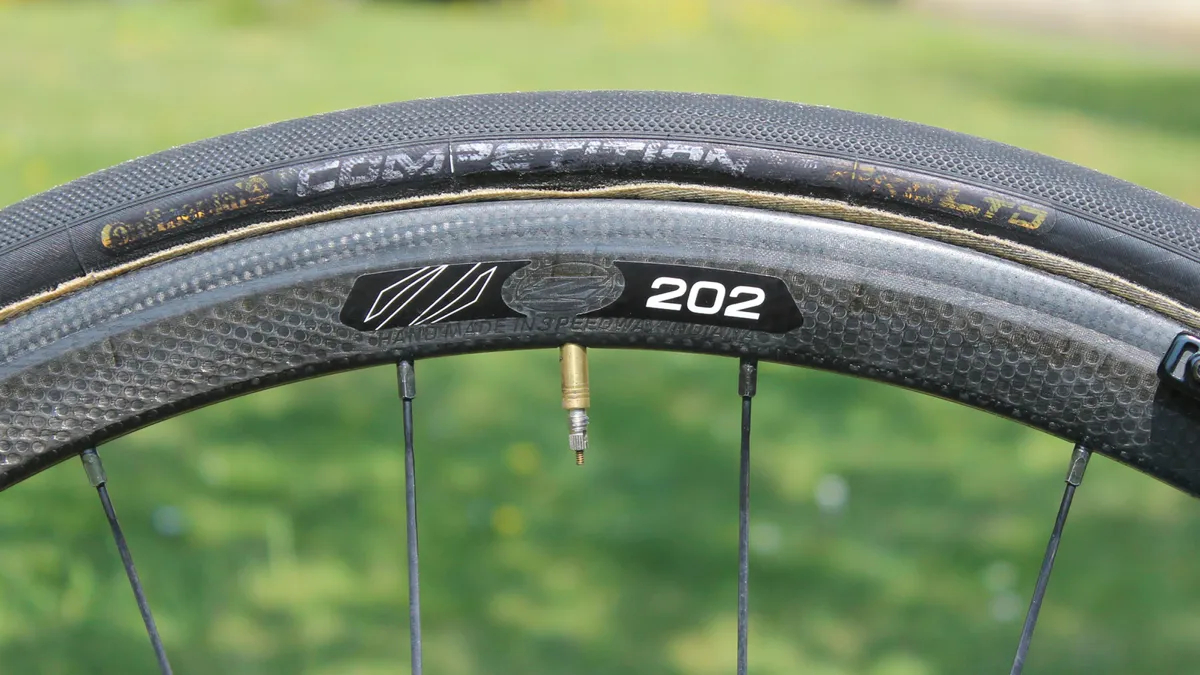


2013
Finally, we arrive at 2013, Bardet's first Tour de France. Bardet finished 15th in the general classification and 4th in the best young riders competition for under-25s in 2013.
We only have one picture from 2013, AG2R were still using Focus bikes, the Izalco Team SL model, but the equipment package was a little different.
AG2R used Campagnolo Super Record in 2013, EPS – the brand's electronic groupset was actually on the market at this time, launching in 2011, but in the below shot Bardet is using a mechanical version, evidenced by the gear outers at the front of the bike, mechanical was still probably a little lighter and weight may have influenced the decision.
Wheels for the Stage 17 time trial were the shallow, carbon fibre Fulcrum Racing Light XLR models fitted with Schwalbe tyres. In 2013, the team used Fizik seatposts, bars and stems.
